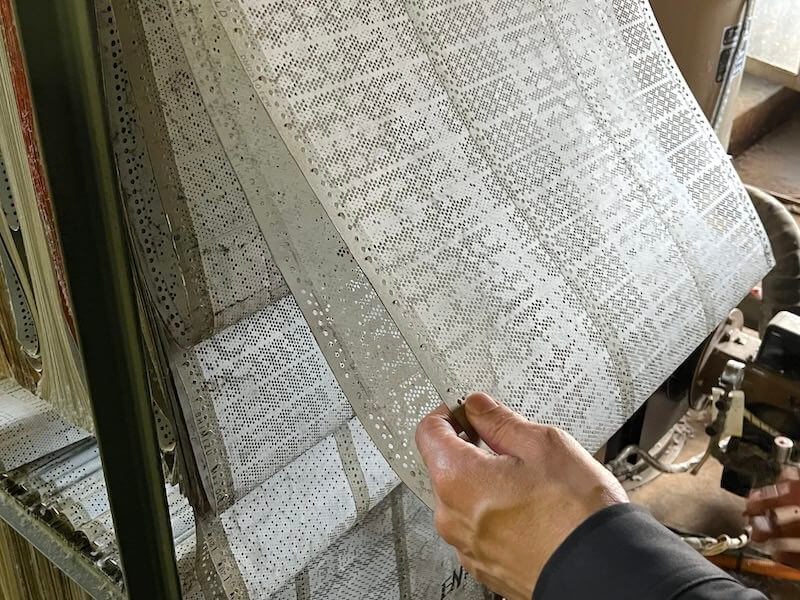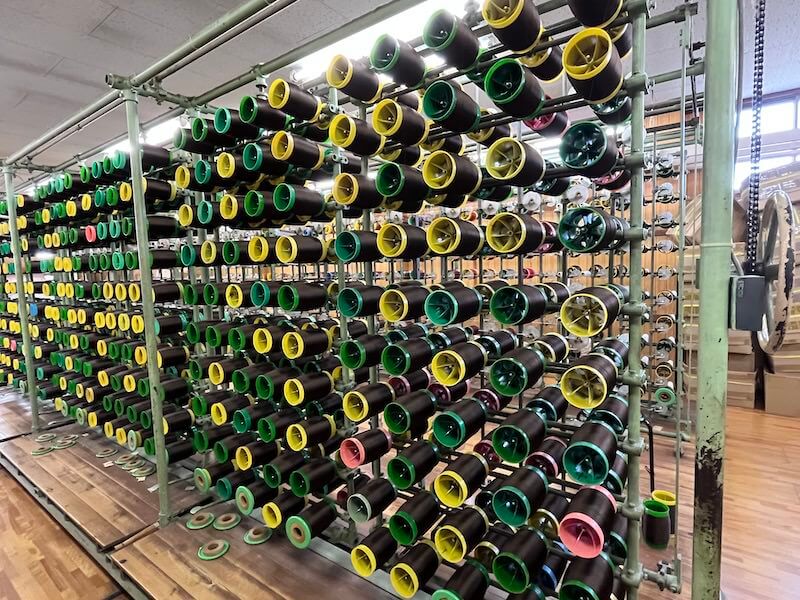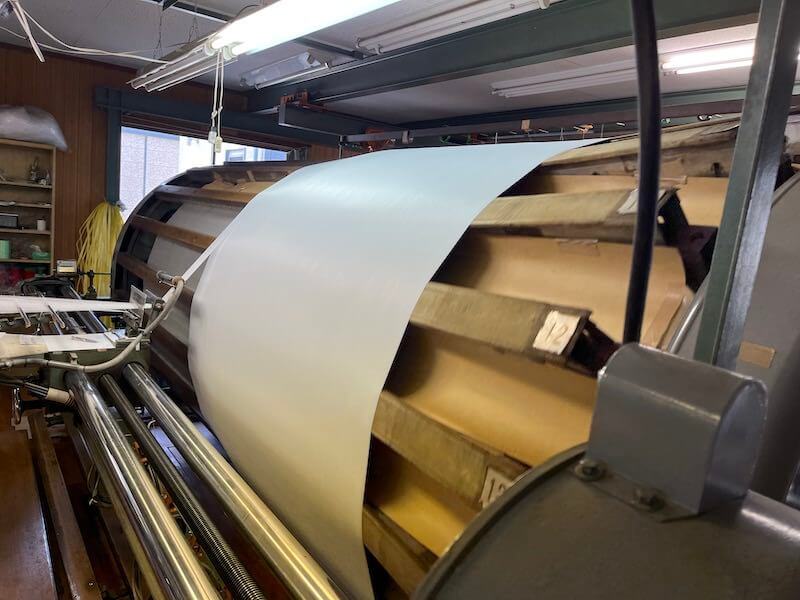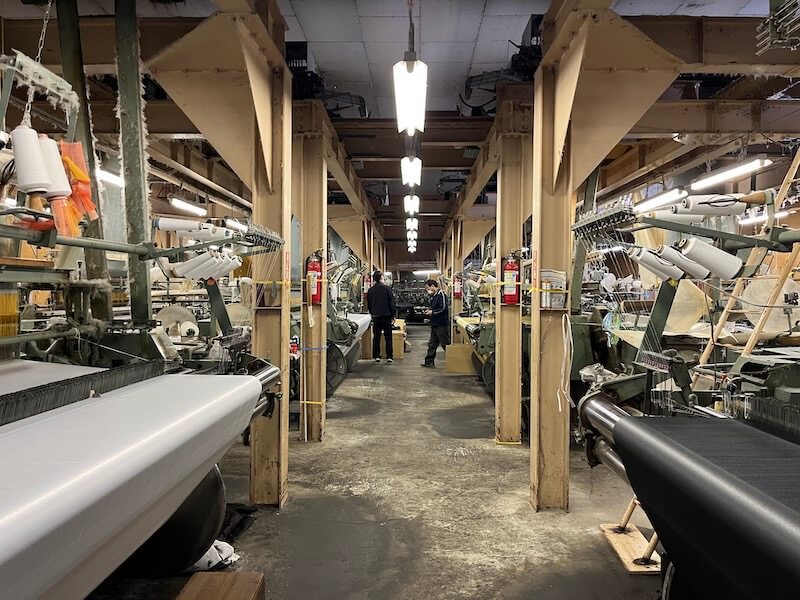Collection: ZABUTON, Japanese traditional versatile cushion
-
 Sold out
Sold out座布団|つゆ草 ピンク|ZABUTON
Vendor:around fujiRegular price $70.00 USDRegular priceUnit price / per -
 Sold out
Sold out座布団|つゆ草 グリーン|ZABUTON
Vendor:around fujiRegular price $70.00 USDRegular priceUnit price / per -
 Sold out
Sold out座布団|グラシエ ピンク|ZABUTON
Vendor:around fujiRegular price $71.00 USDRegular priceUnit price / per -
 Sold out
Sold out座布団|グラシエ ブルー|ZABUTON
Vendor:around fujiRegular price $71.00 USDRegular priceUnit price / per -
 Sold out
Sold out座布団|シルビアNo.105 ピンク|ZABUTON
Vendor:around fujiRegular price $71.00 USDRegular priceUnit price / per -
 Sold out
Sold out座布団|シルビアNo.105 ブルー|ZABUTON
Vendor:around fujiRegular price $71.00 USDRegular priceUnit price / per -
 Sold out
Sold out座布団|あこがれ イエロー|ZABUTON
Vendor:around fujiRegular price $69.00 USDRegular priceUnit price / per -
 Sold out
Sold out座布団|あこがれ ピンク|ZABUTON
Vendor:around fujiRegular price $69.00 USDRegular priceUnit price / per -
 Sold out
Sold out座布団|あこがれ グリーン|ZABUTON
Vendor:around fujiRegular price $69.00 USDRegular priceUnit price / per -
 Sold out
Sold out座布団|あこがれ ブルー|ZABUTON
Vendor:around fujiRegular price $69.00 USDRegular priceUnit price / per
Fuji Yoshida / Textile production area

I heard that Fujiyoshida has a long history of textiles and produces quality fabrics.

Fujiyoshia City in Yamanashi Prefecture is a place where weaving has been carried out for a long time. Textiles in Fujiyoshia are known for their Jacquard weaving in which certain colors and patterns stand out depending on the thread used. There are several factories in the city that specialize in different steps of the process and work together to create a single piece of fabric.

It really is the crystallization of local craftsmanship, isn't it? What are the characteristics of this textile production area?

Everything is yarn-died. Therefore, the patterns and colors are vividly displayed.

How does yarn dyeing make it more vivid?

Because unlike with piece dyeing, you can use threads of many different colors. In piece dyeing, only two colors can be dyed on the warp and the weft, but yarn dyeing allows any number and any combination of colors to be used. This is the advantage of Fujiyoshida's basic method, yarn-dyed Jacquard weaving.
Process Explanation
As mentioned earlier, the main characteristic of Fujiyama-textile is its Jacquard weaving. Highly experienced craftspeople are in charge of each of the steps below.

Manufacturing process 1
Planning & Design
Determine the colors and pattern of the fabric, the material, the thickness, the number of twists, density, and warp width

Manufacturing process 2
Making the Punch Cards
Punch cards act like a blueprint for a textile product's design. In Jacquard weaving, the holes in the cards determine the movement of the warp and weft threads, creating a pattern on the fabric.

Manufacturing process 3
Twisting, Hanking, & Dyeing
Twisting is the process of winding threads together in order to give them the necessary strength. After the thread has been twisted, it is wound onto a bobbin. It is then rewound into a shape called a hank before dyeing. After that, the yarn dyeing is complete.

Manufacturing process 4
Warping & Warp Knotting
Warping is the process of arranging yarn-dyed threads according to predetermined numbers, densities, and lengths and winding them on a beam. When replacing a beam with a new one on the loom, the old and new warp threads must be tied together. A skilled craftsperson is in charge of this delicate process of connecting each individual thread with the same tension. The finished beam is then sent to the next factory.

Manufacturing process 5
Weaving
Some 10,000 threads are placed on the loom by craftspeople over a period of one to two weeks. The process of turning thread into fabric is called weaving. The fabric is made by separating the warp threads into upper and lower parts and passing weft threads between them.

Manufacturing process 6
Fabric Inspection
Fabric Inspection is the process of checking finished fabric for dirt or damage. Visual inspections by craftspeople ensure quality. The front and back sides are carefully inspected and tweezers, needles, and scissors are used to perform mending.
What is a Zabuton? It Starts with Bamboo Floor Mats
A zabuton can be placed under your legs or buttocks to make sitting more comfortable, or it can be used as a lumbar pillow or head pillow while resting on the sofa. You might call it a Japanese-style cushion.
In general, cushions are usually used on sofas or comfortable chairs, but in addition to these uses, zabuton cushions can also be placed on the floor for a comfortable sitting experience.
In fact, this is the original purpose of these cushions because their shape doesn't bulge as much as other cushions and their thickness is consistent all the way to the corners. We recommend zabuton for rooms where you take off your shoes or guest rooms because you won't feel sore even after sitting on them for a long time.
They have their roots in bamboo flooring. Traditional bamboo flooring called "tatami" was made by stacking bamboo mats called "mushiro" but this evolved into a thick mat known as a "shitone" which then became the zabuton floor cushions used today. Many Japanese homes have zabuton cushions and when guests visit it is common for everyone to sit on zabuton and chat.
Many Japanese people use them instead of cushions.
How about incorporating some stylish Japanese furnishings into your life too?
Types of Zabuton
Zabuton are mainly classified into seven types based on their size.
- Chasekiban: 43 x 47cm (17 x 18.5"")
- Kozabuton: Square sizes from 43cm (17"") to 50cm(19.5"")
- Momenban: 51 x 55cm (20 x 21.5"")
- Meisenban: 55 x 59cm (21.5 x 23"")
- Hattanban: 59 x 63cm (23 x 25"")
- Donsuban: 63 x 68cm (25 x 27"")
- Meotaoban: 67 x 72cm (26.5 x 28"")
In general, Meisenban and Hattanban are the most commonly used sizes and our website also carries them.
Wagara are recommended for rooms with modern interiors.
Their luxurious designs based on Wagara, traditional Japanese patterns exude Japanese traditional culture and are recommended not only for traditional Japanese spaces with bamboo mats and paper doors but also for modern interiors with relaxing atmospheres. They can be used in a wide range of places such as living rooms, guest rooms, lodging facilities, or luxury spaces.
We hope you consider these Japanese-crafted zabuton made with Japanese-grown cotton and use them as everyday furnishing that lasts a long time or as the perfect gift for loved ones, special occasions, or housewarmings.
The weaving of the cover fabric will now be explained in detail.
Fujiyama-textile / Craftsmen of Fujiyoshida
Fujiyama-textile is an original brand of textile products made by the Fujiyoshida Textile Cooperative Association. It is unique for its yarn-dyed, high-density Jacquard weaving using fine thread.
Jacquard weaving is an intricate method to create patterns in a fabric by weaving different pre-dyed threads according to a sequence. Because it is neither printed nor piece dyed, the pattern and color with not fade from washing for a feeling of high quality.
At the foot of Mt. Fuji, experienced craftspeople perform all the work of planning, designing, making punch cards, yarn dyeing, warping, warp knotting, weaving, and more. Our high-quality woven fabric is highly regarded in Japan and widely used in luxury hotels.
History as a Textile Town
Located at the foot of Mt. Fuji's northern side, Fujiyoshida and Nishikatsura have been known as producers of silk for over 1,000 years and during the Edo period when Kai silk was popular.
This area became famous for high-grade, dyed silk production because it was blessed with the groundwater of Mt. Fuji, and because nearby areas (such as Fujiyoshida, Tsuru, and Kofu) had thriving silk farms. Dyeing is a part of weaving and it is said that the colors produced in this region and dyed using the groundwater of Mt. Fuji never fade through the four seasons and cannot be made anywhere else.
Jacquard weaving was introduced as the times changed and regional factories banded together to improve the precision further. In more recent years, synthetic fibers have also been incorporated to meet diverse weaving needs and luxury preferences for items such as zabuton, bedding, costumes, clothing, and more.
What's Important to Artisans and Craftspeople
We listen to our clients' requests, backgrounds, and thoughts on fabric production, and after repeated consultations, we create the desired fabric.
We pursue fabric making with the desire to provide Japan's best tactile comfort, sleep comfort, sitting comfort, and hospitality for those who use our products.
Twisting, dyeing, and weaving are jobs that cannot be done by a single person, or even a single company. They can only be done by a production region. The production region of Fujiyoshida cannot be recreated anywhere else, so we must stay connected and working together because if we don't it will all be lost.
We hope you enjoy the color and high-quality feel of fabrics made with the traditional Fujiyama-textile techniques of Japan's textile town, Fujiyoshida.










